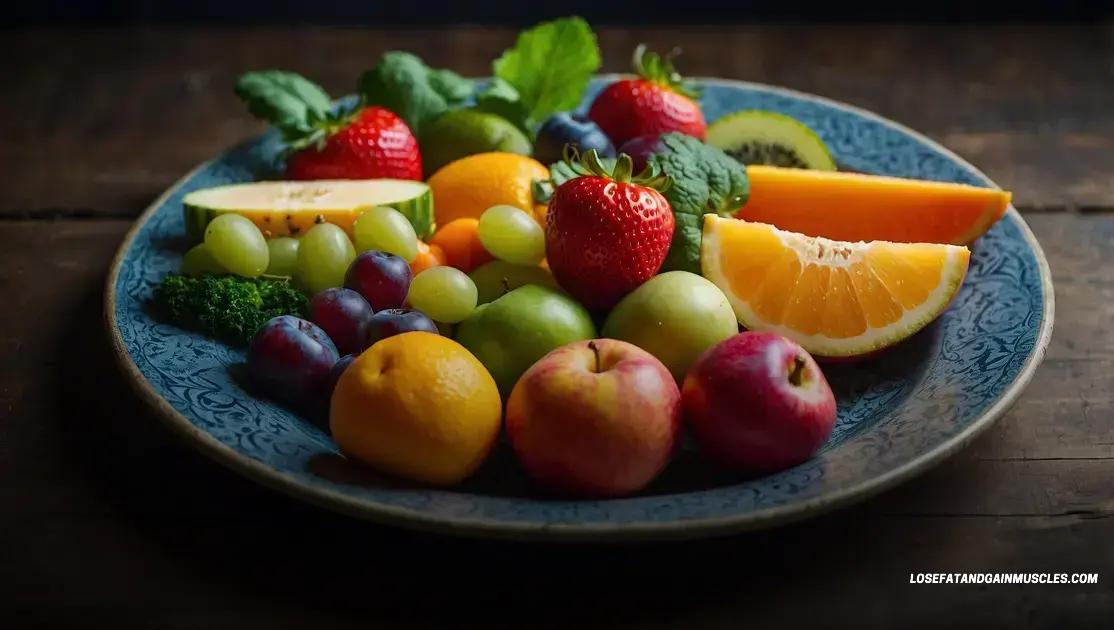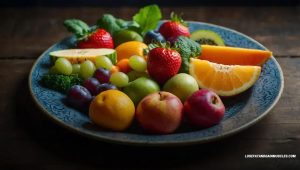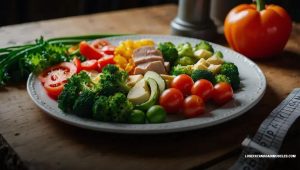Is It Good to Build Muscle If You Lose Fat? Key Benefits Explained
Building muscle while losing fat is achievable through a high-protein diet, strength training, and a moderate calorie deficit. Combining compound exercises, balanced nutrition, and consistent habits ensures long-term results, improving body composition and overall health.
Combining **muscle building** and **fat loss** is a transformative approach to achieving a fitter, healthier body. By integrating effective workouts, balanced nutrition, and dispelling common myths, individuals can unlock significant health benefits. In this guide, we’ll uncover the science behind this dynamic duo and share sustainable strategies for success.
The Science of Building Muscle While Losing Fat
The science behind building muscle while losing fat relies on understanding how the body manages energy. The body uses calories for energy, and consuming fewer calories than you burn typically results in fat loss. Meanwhile, muscle growth occurs when the body repairs micro-tears in muscle tissue caused by resistance training or weight lifting. Achieving both simultaneously requires careful planning and execution.
To lose fat, a caloric deficit is necessary. However, if this deficit is too large, it can hinder muscle growth or, worse, lead to muscle loss. This is where precision is essential. A moderate deficit, paired with high-protein intake, fuels fat loss while preserving muscles.
On the other hand, the body needs adequate protein and strength training to build muscle. Protein offers the essential amino acids required for muscle repair and growth. Strength training sends a signal to your body that muscle mass is essential, encouraging development even in a calorie deficit state, often referred to as “body recomposition.”
Some individuals experience a phenomenon known as “newbie gains,” where beginners can simultaneously build muscle and lose fat due to the body’s adaptation to new stimuli. More experienced individuals may require optimized techniques, such as cycling between fat loss and muscle-building phases, for continued progress.
The key lies in striking a balance—carefully monitoring your diet, staying consistent with strength training, and integrating recovery periods to avoid overtraining. By understanding the science, you can tailor your approach for sustained results.
Key Benefits of Combining Muscle Gain and Fat Loss

Combining muscle gain and fat loss offers a wide range of physical and health benefits. This dual approach not only improves body composition but also enhances overall well-being.
One key benefit is achieving a leaner physique. By building muscle while shedding fat, your body becomes more toned and defined. Muscle has a higher density than fat, so you may weigh the same but appear leaner and more athletic.
Another advantage is an increased metabolic rate. Muscle tissue burns more calories at rest compared to fat, meaning you’ll naturally burn more calories throughout the day, even while inactive. This helps prevent future weight gain and supports sustainable fat loss.
Improved strength and functionality are also significant benefits. With more muscle, daily movements and physical activities become easier, reducing the risk of injury and improving your quality of life. Your body becomes more resilient and capable.
Building muscle while losing fat also contributes to better hormonal balance. Increased muscle mass helps regulate hormones like insulin and testosterone, which play vital roles in metabolism and physical fitness.
Lastly, this combined approach brings a boost to self-confidence. Seeing progress in strength, stamina, and physique can enhance mental health and provide motivation to maintain a healthy lifestyle for the long term. This work builds not only physical strength but also mental resilience.
Effective Diet for Muscle Growth and Fat Loss
An effective diet for muscle growth and fat loss focuses on striking the right balance between macronutrients, total caloric intake, and timing of meals. Proper nutrition is essential for achieving both goals simultaneously.
Protein intake is key to muscle repair and growth. Aim to consume high-quality protein sources like chicken, fish, eggs, tofu, beans, and Greek yogurt. A daily protein target of 0.8–1 gram per pound of body weight supports muscle synthesis even during calorie deficits.
Carbohydrates are vital for fueling workouts and maintaining energy levels. Choose complex carbs like brown rice, quinoa, oatmeal, and sweet potatoes. These provide a steady energy release and prevent muscle breakdown during exercise.
Healthy fats are important for hormonal balance and overall health. Include sources such as avocados, nuts, seeds, olive oil, and fatty fish (salmon, mackerel) to support fat loss and aid recovery.
Timing your meals can enhance performance and recovery. Try eating a balanced meal 2–3 hours before your workout, with a mix of protein, carbs, and healthy fats. Post-workout meals should emphasize protein and carbs to replenish glycogen and repair muscles.
Maintaining a calorie deficit is critical for fat loss but should not be overly aggressive. A moderate deficit of 250–500 calories per day is effective for losing fat while preserving muscle mass. Using calorie-tracking apps can help keep intake consistent.
Lastly, hydration is essential for both muscle growth and fat loss. Drinking enough water supports metabolic functions and prevents performance dips during workouts. Aim for at least 8–10 glasses per day, adjusting for exercise intensity.
Top Workouts to Build Muscle and Lose Fat

To effectively build muscle and lose fat, focusing on the right workouts is critical. A combination of strength training and cardio helps maximize results by building lean muscle and burning excess calories.
Compound exercises are a must for building muscle. These movements target multiple muscle groups, increasing efficiency and triggering more growth. Exercises like squats, deadlifts, bench presses, pull-ups, and overhead presses are great for building strength and enhancing muscle tone.
Incorporating high-intensity interval training (HIIT) is another effective strategy for fat loss. HIIT alternates short bursts of intense activity with brief recovery periods. A typical session can include sprint intervals, kettlebell swings, or jump squats, which torch calories while preserving muscle mass.
Progressive overload is essential for long-term muscle growth. Gradually increase the weight, reps, or intensity of your workouts to challenge your muscles continuously. This ensures constant adaptation and growth.
Adding bodyweight exercises, like push-ups, lunges, and planks, can further enhance muscle development and aid fat loss. These exercises build functional strength and can be performed anywhere, making them a convenient option.
Don’t forget the importance of active recovery. Light activities such as stretching, yoga, or low-intensity cycling improve blood circulation and help muscles repair while still burning calories. This ensures consistent progress and reduces the risk of injury.
Lastly, aim for consistency in your workout routine. Training at least 4–5 times per week with a mix of strength and cardio sessions is optimal for achieving muscle growth and fat loss efficiently.
Common Myths About Muscle Building and Fat Loss
There are many myths surrounding muscle building and fat loss that can mislead your fitness journey. Understanding the truth about these common misconceptions will help you make informed decisions.
One popular myth is that you can target fat loss in specific areas, often referred to as spot reduction. However, fat loss happens uniformly across the body and cannot be confined to one area, like the abdomen or thighs. The key is maintaining a consistent calorie deficit combined with full-body strength training.
Another myth is that cardio burns muscle. While excessive cardio without proper nutrition can lead to muscle loss, combining moderate-intensity cardio with strength training and sufficient protein intake can improve endurance and health without sacrificing muscle.
Some believe that lifting heavy weights will make you bulky. This is particularly untrue for most people, especially women. Building significant muscle mass requires years of dedicated training and a consistent caloric surplus. For most individuals, weight training leads to a toned and lean physique, not bulkiness.
A common misconception is that eating less protein is fine when trying to lose weight. Protein is vital for retaining muscle mass during fat loss. Skimping on protein can lead to muscle breakdown, causing a loss of strength and slower metabolism.
Lastly, many assume that you must choose between either building muscle or losing fat. While challenging, achieving both goals simultaneously—known as body recomposition—is possible with the right balance of nutrition, exercise, and recovery.
Tips for Sustaining Long-Term Results

Maintaining long-term results in building muscle and losing fat requires consistency, balanced habits, and a focus on sustainable practices. These tips can help you stay on track for the long haul.
Set realistic goals that focus on progress rather than perfection. Avoid extreme diets or workout routines that are difficult to maintain. Instead, aim for steady, incremental improvements in strength and fitness levels.
Consistency is key. Develop a routine that you can stick to, including regular workout schedules and meal prepping. Creating a predictable structure makes it easier to stay disciplined.
Monitor your progress by tracking workouts, body measurements, or photos. Adjust your fitness program based on how your body is responding. This helps you stay motivated and ensures your efforts are aligned with your goals.
Prioritize recovery to avoid burnout and injuries. Incorporate rest days, quality sleep, and active recovery sessions into your regimen. Stretching, massage, and foam rolling can aid muscle recovery and prevent stiffness.
Stay flexible with your nutrition and workouts by adopting the 80/20 rule. This means following your plan 80% of the time while allowing room for indulgences or modifications when needed to keep things enjoyable.
Surround yourself with a supportive community. Whether it’s a gym buddy, personal trainer, or online group, having support keeps you accountable and inspired to continue your journey.
Finally, focus on the bigger picture. Building muscle and losing fat are parts of a healthier lifestyle. Celebrate small achievements along the way and keep your long-term health at the forefront of your efforts.
Achieving Success in Building Muscle and Losing Fat
Combining muscle building and fat loss is not just about achieving a desired physique—it also enhances overall health and well-being. By understanding the science behind these processes, embracing effective diets, and adopting the right workouts, you can set yourself up for sustainable success.
Addressing common myths about fitness helps you avoid misconceptions that often derail progress, while staying consistent and focused on long-term habits ensures lasting results. Remember to celebrate your progress, no matter how small, and adapt your strategies as needed to meet your goals.
Ultimately, the journey to a stronger, leaner body is a holistic commitment that integrates discipline, flexibility, and joy in the process. With the right tools, knowledge, and mindset, you can confidently achieve and maintain your fitness objectives.
FAQ – Common Questions About Building Muscle and Losing Fat
Can I build muscle and lose fat at the same time?
Yes, this process is called body recomposition. By combining a high-protein diet, strength training, and a moderate calorie deficit, you can achieve both goals simultaneously.
Is cardio necessary for losing fat?
Cardio is not mandatory but can be helpful for fat loss. Combining cardio with strength training provides a balanced approach to improving fitness and burning calories.
How much protein should I eat for muscle growth?
Aiming for 0.8–1 gram of protein per pound of body weight daily is ideal for supporting muscle growth and repair.
Will lifting heavy weights make me bulky?
No, building large bulky muscles requires specific training and a calorie surplus. Most people, especially women, will develop a leaner, more toned physique with weight lifting.
Can I target fat loss in specific areas of my body?
No, spot reduction is a myth. Fat loss occurs uniformly across your body based on genetics and overall caloric deficit.
What’s the best workout for building muscle and losing fat?
A combination of compound strength exercises like squats and deadlifts, along with high-intensity interval training (HIIT), is effective for simultaneous muscle growth and fat loss.













